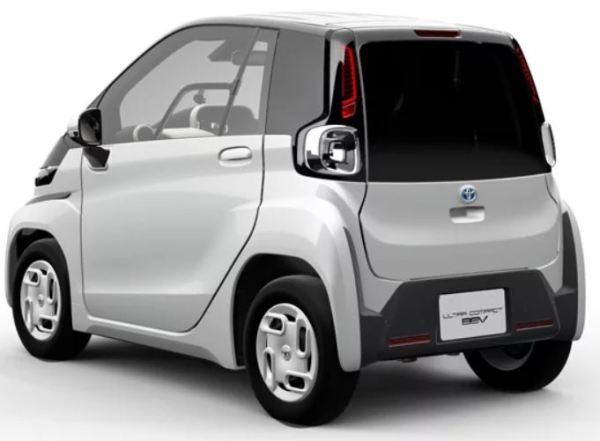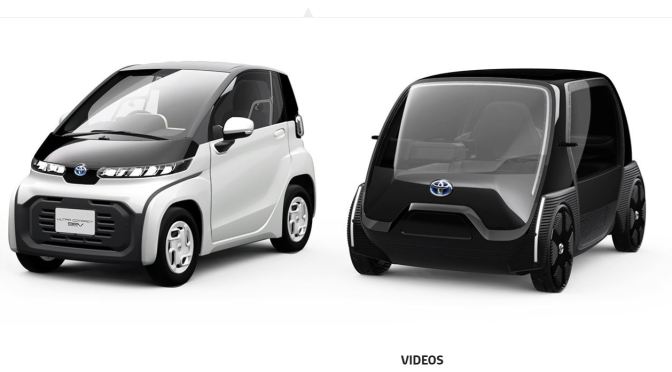In 2021, the average age of vehicles on the road reached a record 12.1 years. Every driver that chooses to hold on to a car for another year is postponing a trip to the dealership, and some industry analysts wonder if rising vehicle ages and prices indicate trouble for new car sales in the future. Automakers are stuffing cars with new technology and improvements but will that be enough to keep buyers wanting the latest and greatest?
Tag Archives: Toyota
Tech: ‘2021 Toyota Mirai’ – Enhanced Hydrogen Fuel Cell Electric Car (Video)
The 2021 Toyota Mirai is the second generation of zero emission hydrogen fuel cell electric sedan.
One of the principal aims for the new 2021 Mirai has been to give the car a stronger emotional appeal, making it a car that people will be attracted to by its looks and the way it drives, as well its eco-performance. The new GA-L platform and Toyota’s advances in FCEV technologies have made this possible. Toyota’s new fuel cell stack and fuel cell power converter (FCPC) have been developed specifically for use with the GA-L platform.
The designers have been able to bring all the elements together in the stack frame (including the water pumps, intercooler, air conditioning and air compressors and the hydrogen recirculation pump) with each part made smaller and lighter, while at the same time improving performance. The stack case itself has been made smaller by using Friction Stir Welding, reducing the gap between the fuel cell and casing.
The new Mirai is equipped with lithium-ion high-voltage battery in place of the current model’s nickel-metal hydride unit. Although smaller in size, it is more energy-dense, giving higher output and superior environmental performance. Containing 84 cells, it has a 310.8 rated voltage compared to 244.8, and a 4.0 Ah capacity, versus 6.5 Ah. Overall weight has been reduced from 46.9 to 44.6 kg. The output has improved from 25.5 kW x 10 seconds to 31.5 kW x 10 seconds.
The battery’s smaller dimensions have allowed it to be positioned behind the rear seats, avoiding intrusion in the load compartment. An optimised air-cooling path has been designed, with discreet inlets either side of the rear seats. The environmental benefit of driving the Toyota Mirai go beyond zero emissions to “negative emissions” – the car effectively cleans the air as it moves. A Toyota innovation, a catalyst-type filter is incorporated in the air intake.
As air is drawn into the vehicle to supply the fuel cell, an electric charge on the non-woven fabric filter element captures microscopic particles of pollutants, including sulphur dioxide (SO2), nitrous oxides (NOx) and PM 2.5 particulates. The system is effective in removing 90 to 100% of particles between 0 and 2.5 microns in diameter from the air as it passes into the fuel cell system.
Future Mobility: Toyota Unveils Production-Ready Ultra-Compact BEV To “Support Aging Society”
FRom a Toyota online news release:
 The ultra-compact, two-seater BEV is specifically designed to meet the daily mobility needs of customers who make regular, short-distance trips such as the elderly, newly licensed drivers, or business-people visiting local customers. It can be driven a range of approximately 100 km on a single charge, reach a maximum speed of 60 km/h, and features an extremely short turning radius.
The ultra-compact, two-seater BEV is specifically designed to meet the daily mobility needs of customers who make regular, short-distance trips such as the elderly, newly licensed drivers, or business-people visiting local customers. It can be driven a range of approximately 100 km on a single charge, reach a maximum speed of 60 km/h, and features an extremely short turning radius.
Toyota Motor Corporation (Toyota) today announced that it will display its new, production-ready Ultra-compact BEV (battery electric vehicle) at the FUTURE EXPO special exhibition of the 2019 Tokyo Motor Show ahead of the vehicle’s planned commercial launch in Japan in 2020. The next-generation mobility solution is designed to provide short-distance mobility while limiting impact on the environment.
“We want to create a mobility solution that can support Japan’s ageing society and provide freedom of movement to people at all stages of life,” said Akihiro Yanaka, Head of Development. “With the Ultra-compact BEV, we are proud to offer customers a vehicle that not only allows for greater autonomy, but also requires less space, creates less noise and limits environmental impact.”
To read more: https://global.toyota/en/newsroom/toyota/30063223.html



